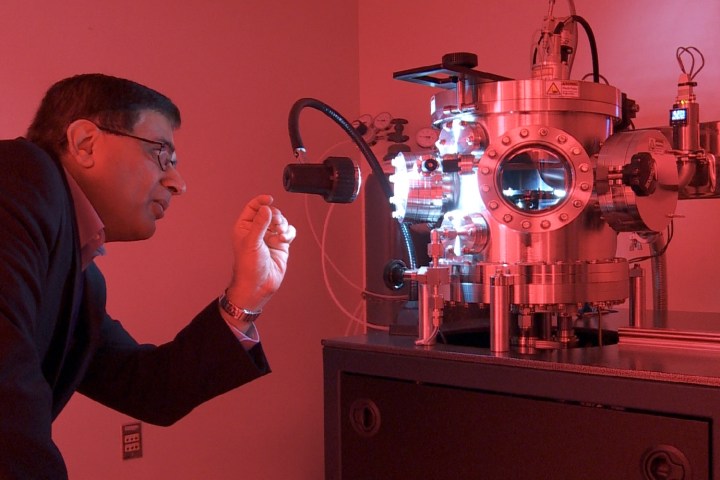
Or maybe you can — because, as a professor and scholar of physics at the University of Alabama at Birmingham, Vohra has led a team of researchers in creating artificial diamonds by generating previously unseen amounts of pressure.
“When you fill your car tire at the gas station, you use approximately two atmospheres of pressure,” he told Digital Trends. “With our work, the goal is eventually to get to 10 million atmospheres, which is the equivalent of the pressure at the center of Saturn. By comparison, the pressure at the center of the Earth is around 3.6 million atmospheres.”
The key to the work is a tiny nanocrystalline-diamond anvil, which has been created in a clean room manufacturing facility at the university. “Our main innovation is the ability to grow a nanocrystalline diamond on top of a single crystal,” Vohra continued. “The reason this is exciting is because it’s possible to achieve much higher pressures using these nanocrystalline diamonds.”
At just 30 micrometers wide and 15 micrometers tall, the team’s nanocrystalline pillar of diamond is tiny, but astonishingly effective. In a test at Argonne National Laboratory in Lemont, Illinois, it showed no sign of deformation when exposed to 264 gigapascals of pressure. This number is roughly 75 percent of the pressure found at the center of the Earth.
“In the last two years, we’ve had a breakthrough in terms of generating pressure due to these nanocrystalline diamonds,” he continued.
So what is the goal of the miniature diamond anvils? Ultimately, there are several — but one will be the possibility of creating as-yet-unknown new materials. Since massive amounts of force in the natural world are capable of turning carbon into diamonds, or volcanic ash into slate, the idea is that increased pressure can result in materials we’ve not even dreamed of.
“There’s a lot interest in this field from a material science perspective,” Vohra concluded. “The ability to generate extreme conditions and the possibility of synthesizing new materials under pressure is very exciting. One of the areas we’re looking at is the creation of novel superhard materials. Diamonds are an incredibly hard material, but they still have limitations when you reach extreme temperatures. Under extreme conditions, a whole new kind of material science becomes possible.”
Next up for the project is the goal of creating smaller grain sizes in the nanocrystalline diamond, which Vohra hopes will make the material even stronger. It’s also hoped that ion beams can be used to machine the top of the micro-anvil to a hemispherical shape, thereby creating an even narrower contact point for greater pressure.
Just make sure your fingers are nowhere near it when it starts crushing things!


